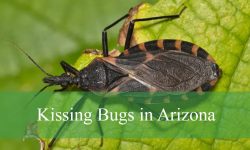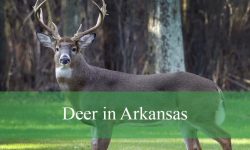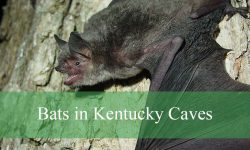Texas is home to a wide variety of ants, and while many are harmless, some species are known for their painful bites and stings. From backyards to farmlands, these ants can cause discomfort, allergic reactions, and even threaten pets or livestock if disturbed.
Identifying the types of biting ants in Texas is important for both safety and prevention. Each species has unique traits, from fiery red invaders that swarm aggressively to native ants that protect their nests with sharp jaws and venomous stings.
This guide covers 9 common biting ants found across the state, with pictures and identification tips. By understanding their appearance, behavior, and habitats, you can better protect yourself, your home, and your animals from unwanted encounters.
Different Types of Biting Ants Found in Texas
Southern Fire Ant (Solenopsis xyloni)
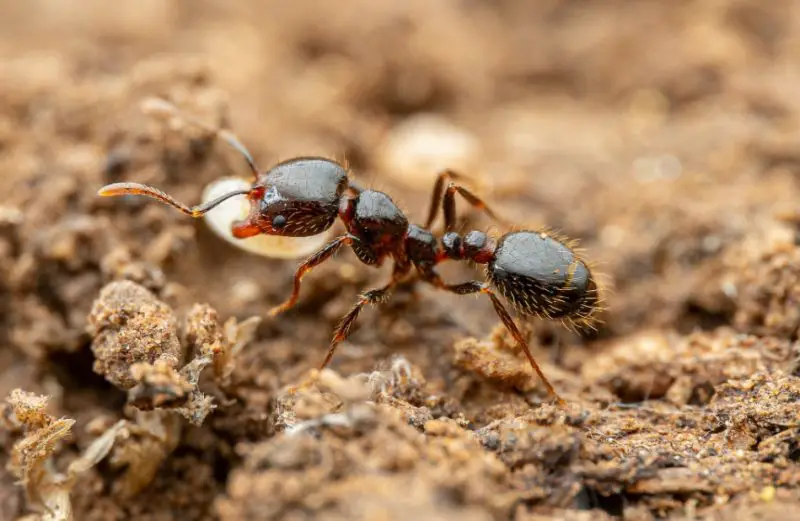
The Southern Fire Ant is a native species found throughout Texas, often mistaken for the invasive Red Imported Fire Ant. These ants are reddish-brown to black with a somewhat two-toned appearance. Workers range from 1/16 to 1/4 inch in size, showing noticeable variation within the colony.
Like their invasive relatives, Southern Fire Ants are aggressive and capable of delivering painful stings. Their venom causes burning sensations and pustules, though usually less severe than the imported species. Still, multiple stings can be very uncomfortable and dangerous for those with allergies.
These ants typically nest in soil, creating irregular, shallow mounds that may be hidden under debris, logs, or rocks. They often invade gardens and agricultural fields, where they forage for seeds, insects, and other small animals.
In Texas, they are more common in drier areas of the state. They can be found in both rural and suburban settings, where their nests may be less obvious but equally problematic when disturbed.
Carpenter Ant (Camponotus spp.)
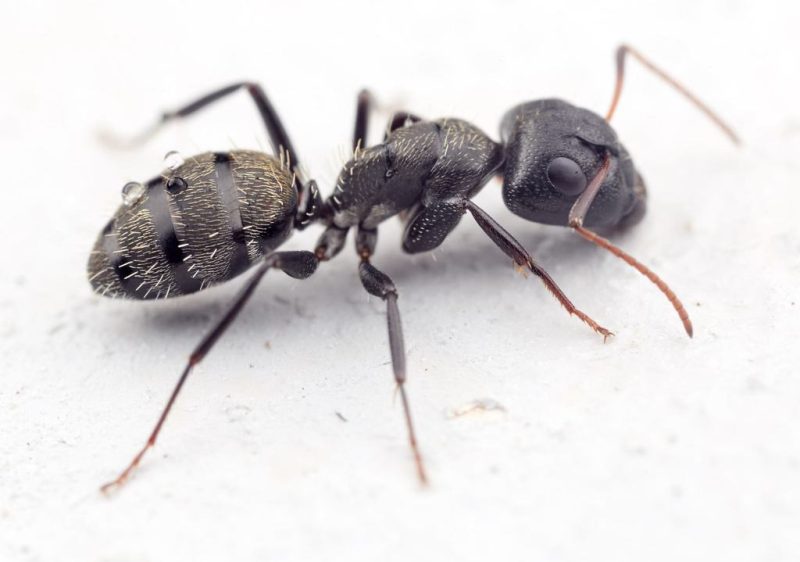
Carpenter Ants are among the largest ants in Texas, with workers ranging from 1/4 to 1/2 inch long. They are usually black or dark brown, though some species may have reddish coloration. Their strong mandibles allow them to deliver painful bites, though they do not sting.
Unlike fire ants, carpenter ants don’t inject venom but instead rely on their sharp jaws, which can break the skin. They also spray formic acid into bites, intensifying the pain. Though not as medically significant as fire ants, their bites can be quite unpleasant.
Carpenter ants are notorious for nesting inside wood, particularly damp or decaying structures. In homes, they can cause damage by hollowing out wood for nesting galleries. Outdoors, they are often found in logs, stumps, and trees.
In Texas, carpenter ants are widespread, especially in wooded areas and urban settings with moisture problems. While their bites are painful, their greatest threat is structural damage to homes and buildings.
Red Imported Fire Ant (Solenopsis invicta)
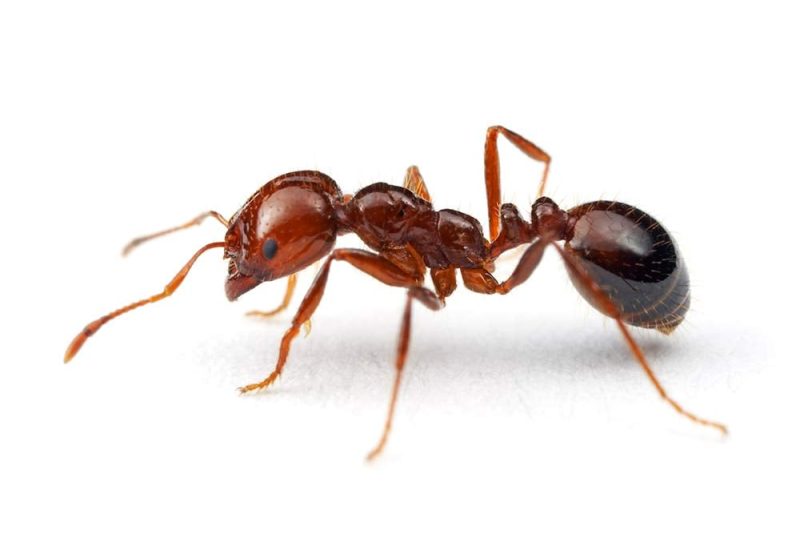
The Red Imported Fire Ant is one of the most notorious biting ants in Texas. Originating from South America, this aggressive species has spread widely across the southern United States. They are reddish-brown with a darker abdomen and measure about 1/8 to 1/4 inch long, with workers showing slight size variations.
These ants are best known for their painful sting, which delivers venom that causes burning, itching, and even allergic reactions in sensitive individuals. Unlike many ants, fire ants bite to grip the skin and then repeatedly sting with their abdomen, making encounters especially unpleasant.
They build large soil mounds in open areas such as lawns, fields, and along roadsides. Colonies can contain hundreds of thousands of ants, making them difficult to eradicate once established. Their mounds often appear after heavy rains, when soil conditions are favorable for building.
In Texas, fire ants thrive in both urban and rural areas, from residential yards to pastures. Their aggressive behavior and rapid colony growth make them a significant pest for homeowners, farmers, and outdoor workers alike.
Leafcutter Ant (Atta texana)
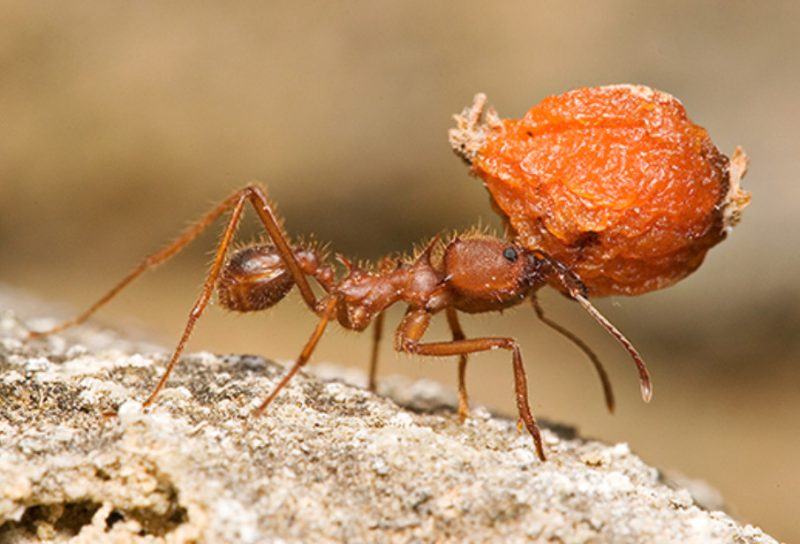
Leafcutter Ants, especially the Texas Leafcutter Ant, are a fascinating yet formidable species in the state. Workers vary in size from small to large, with the largest reaching up to 1/2 inch in length. They are reddish-brown and easily identified by their behavior of carrying leaf fragments in long trails.
Although they rarely sting, leafcutter ants can deliver strong bites with their powerful jaws. The bite itself can be painful, and their sharp mandibles are capable of breaking the skin. Their defensive behavior makes them difficult to approach when disturbed.
These ants are famous for their farming lifestyle. They cut leaves and vegetation, not to eat directly, but to cultivate fungus, which serves as their primary food source. Their colonies can number in the millions, making them one of the most complex insect societies.
In Texas, leafcutter ants are most common in the southern and eastern parts of the state. They are frequently seen in agricultural fields, pastures, and wooded areas, where they can cause significant damage to crops and ornamental plants.
Rasberry Crazy Ant (Nylanderia fulva)
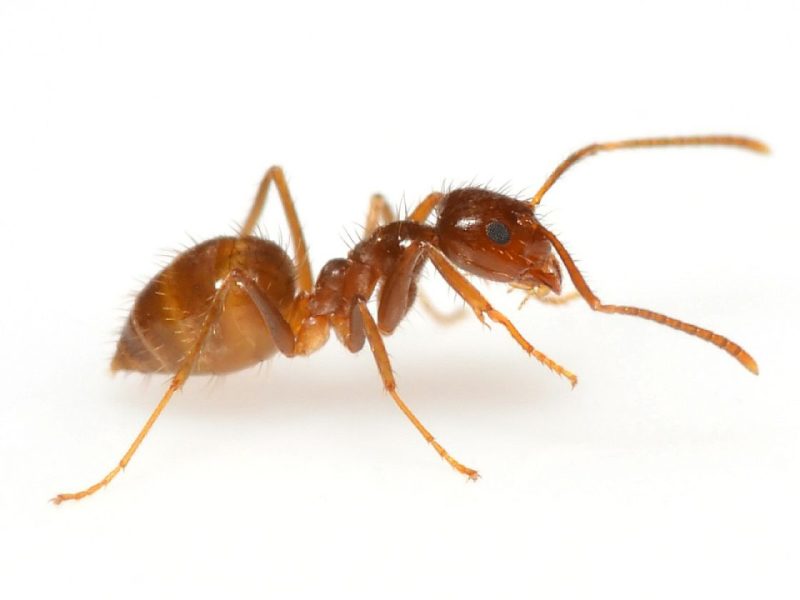
The Rasberry Crazy Ant, an invasive species, has spread rapidly across Texas in recent decades. They are small, reddish-brown ants measuring about 1/8 inch long. Their name comes from their erratic, fast-moving behavior, which makes them easy to recognize.
Although they don’t sting like fire ants, Rasberry Crazy Ants do bite with their small mandibles. Their bites are not severely painful but can cause mild irritation, especially when large numbers swarm. Their overwhelming presence can be distressing to homeowners.
These ants form massive colonies that lack a central nest. Instead, they spread across wide areas, infesting electrical equipment, homes, and yards. They are notorious for shorting out circuits by nesting in electrical boxes and appliances.
In Texas, they are most prevalent in the Gulf Coast region, where warm, humid conditions support their spread. Their sheer numbers make them one of the most challenging ant infestations to control in the state.
Acrobat Ant (Crematogaster spp.)
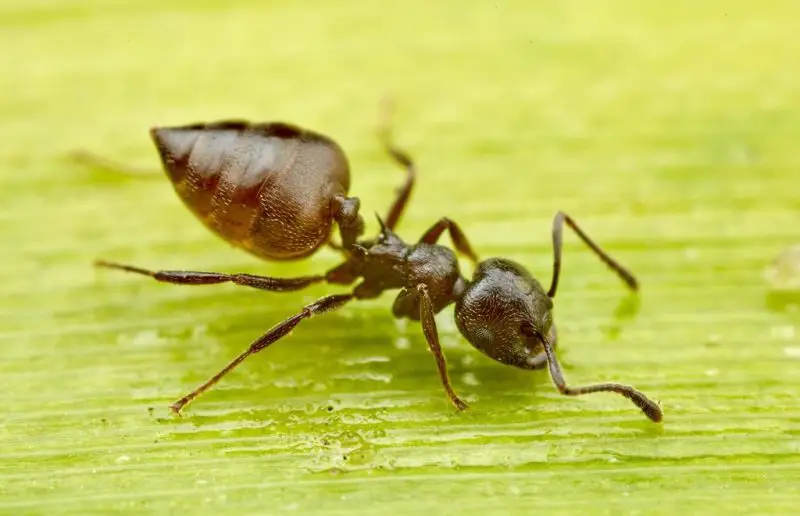
Acrobat Ants are small to medium-sized ants, usually 1/16 to 1/8 inch long, with a shiny black or brown body. Their name comes from their unique habit of raising their heart-shaped abdomen above their head when threatened, a distinctive behavior that makes them easy to identify.
These ants can bite using their mandibles, and while their bites are not as painful as fire ants, they may still cause irritation. Some species also release a foul odor when disturbed, which acts as a defense mechanism against predators.
Acrobat Ants prefer to nest in decaying wood, logs, stumps, or under rocks. They often invade homes, especially where moisture and rotting wood are present. Indoors, they are commonly found in wall voids, insulation, or around leaky plumbing.
In Texas, Acrobat Ants are widespread in both rural and urban areas. While their bites are not particularly dangerous, their presence indoors can become a nuisance, especially if they form large colonies in wooden structures.
Harvester Ant (Pogonomyrmex spp.)
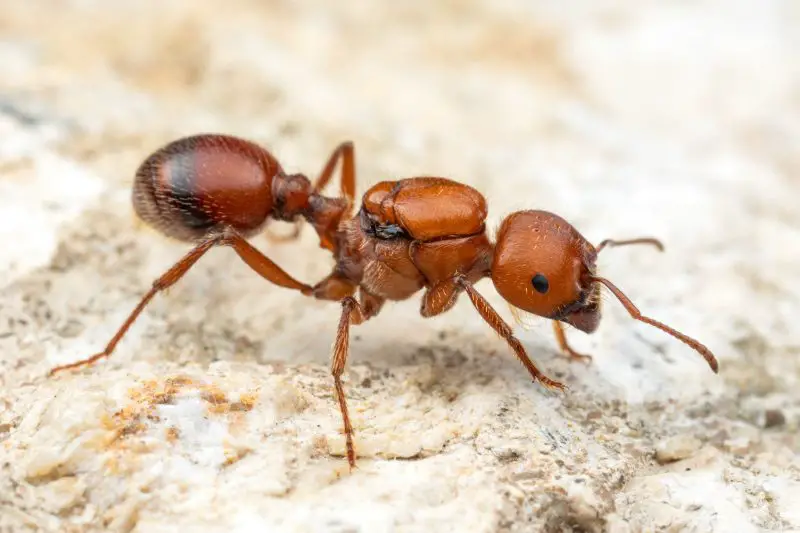
Harvester Ants are medium to large ants, usually 1/4 to 1/2 inch long, with a reddish-brown or orange coloration. They are easy to recognize because of their large, bare soil nests and the clear, vegetation-free areas around them caused by their seed-collecting habits.
These ants have strong mandibles and can deliver painful bites, often followed by a powerful sting. Their venom is particularly potent compared to other ants, and it can cause swelling, burning, and even allergic reactions in sensitive individuals.
Harvester Ants primarily feed on seeds, which they collect and store in underground chambers. Their colonies are relatively easy to spot due to the cleared zones around their nests, which may stretch several feet in diameter.
In Texas, Harvester Ants are commonly found in dry, open areas such as fields, pastures, and deserts. While they are ecologically important seed dispersers, their painful stings make them a concern for people and animals who accidentally disturb their colonies.
Bigheaded Ant (Pheidole spp.)
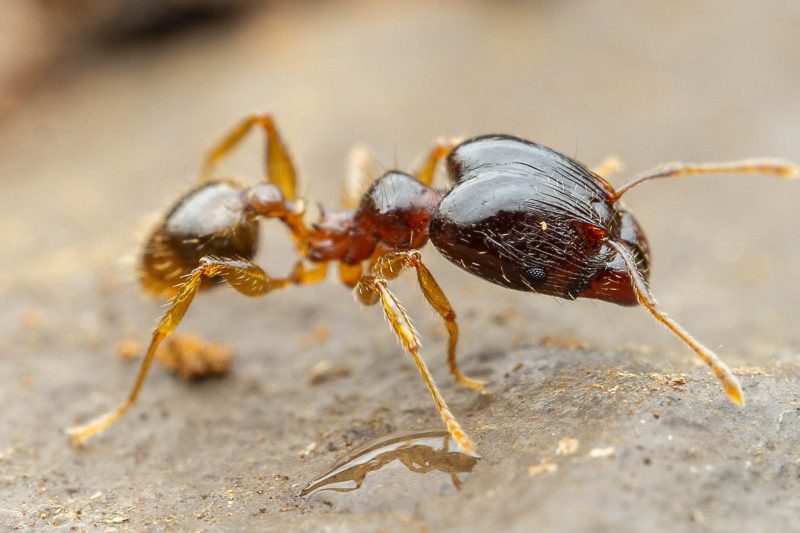
Bigheaded Ants are named for their worker caste, where some ants develop disproportionately large heads compared to their bodies. Workers vary in size from 1/16 to 1/8 inch long and are usually reddish-brown to yellow in color.
These ants use their powerful jaws to bite, and while the bites are not as painful as those from fire ants, they can still cause mild irritation. Their defensive behavior, especially in large numbers, makes them noticeable pests when disturbed.
Bigheaded Ants prefer to nest in soil, often under rocks, logs, or leaf litter. They are also known to invade yards and homes, particularly in sandy soils. Colonies can be extensive, and their foraging trails are often easy to spot.
In Texas, Bigheaded Ants are distributed across many regions, especially in warm, sandy environments. While their bites are not severe, their infestations can be difficult to control due to their large colony sizes and underground tunneling.
Pavement Ant (Tetramorium immigrans)
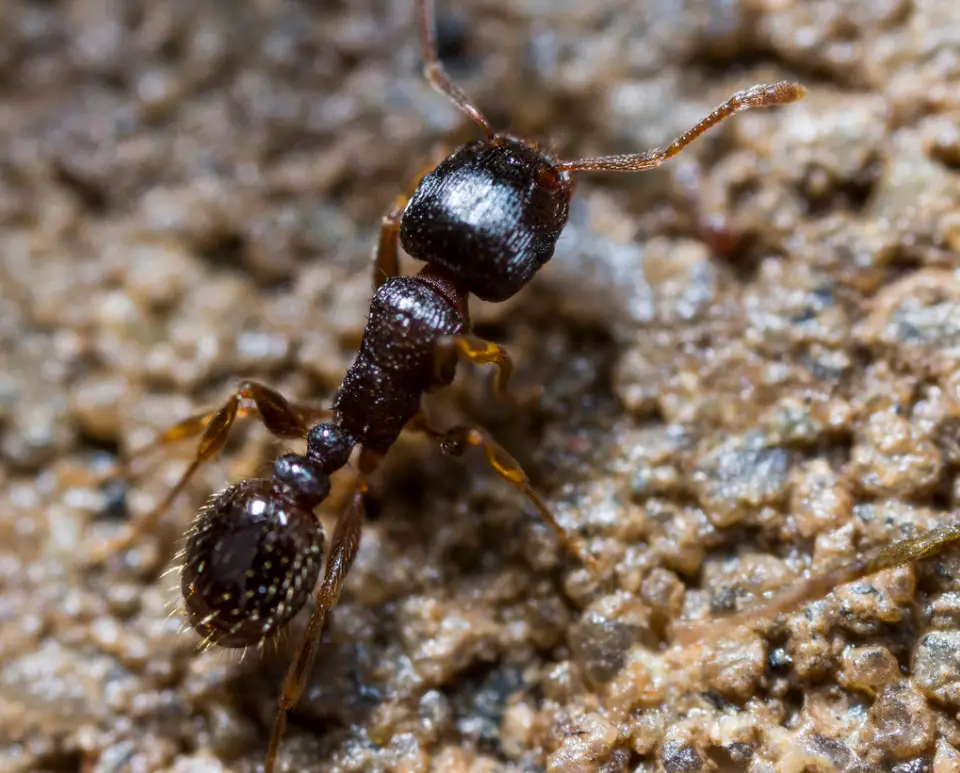
The Pavement Ant is a small ant species, about 1/8 inch long, with a dark brown to black body. They get their name from their habit of nesting under sidewalks, driveways, and building foundations, often pushing small piles of dirt through cracks in pavement.
Pavement Ants are capable of biting, though their bites are not very painful. They are more of a nuisance pest, but in large numbers, they can still cause irritation. Their foraging behavior can also lead them indoors in search of food.
These ants feed on a wide variety of items, including sweets, grease, and other insects. Colonies can grow large and are usually identified by the small dirt mounds that appear along cracks and crevices in paved areas.
In Texas, Pavement Ants are especially common in cities and suburban neighborhoods. While their bites are mild, their presence around homes and sidewalks makes them one of the more frequently encountered ants in urban environments.
How to Identify Biting Ants in Texas
Key features to look for (color, size, nesting sites)
Identifying biting ants in Texas begins with observing their physical characteristics. Fire ants, for example, are reddish-brown and small, while carpenter ants are much larger and often black or dark brown. Leafcutter ants are recognized by their reddish color and the habit of carrying leaf fragments in long trails.
Size is another helpful clue. Most biting ants measure between 1/16 and 1/2 inch, though carpenter ants and leafcutter ants are on the larger end of the scale. Observing where ants nest is equally important—pavement ants are usually found under sidewalks, while harvester ants create bare soil patches in open fields.
By looking at color, size, and nesting location together, you can narrow down the species and determine whether you are dealing with a mild nuisance or a more dangerous biting ant.
Differences between biting vs. stinging ants
Not all ants in Texas sting, and not all stings are the same. Fire ants are the most notorious because they both bite to grip the skin and then sting multiple times with venom. Carpenter ants, on the other hand, rely on their strong jaws to bite and may spray formic acid into the wound, causing extra irritation.
Biting ants typically cause sharp pinches or mild irritation, while stinging ants inject venom that results in burning, swelling, and sometimes pus-filled blisters. Knowing whether an ant species bites, stings, or does both can help in identifying the exact species.
Behavior clues that help in identification
Behavior can also reveal which type of ant you’re dealing with. Fire ants are extremely aggressive and will swarm quickly when their mound is disturbed. Rasberry Crazy Ants, as their name suggests, move in fast, erratic patterns, making them stand out from other ants.
Harvester ants are often seen carrying seeds back to their nests, while leafcutter ants march in long trails with pieces of leaves overhead. Acrobat ants raise their heart-shaped abdomen when threatened, a distinctive posture. By observing how ants move and react, you can often identify them even before looking closely at their size or color.
Where Are Biting Ants Most Common in Texas?
Urban areas: lawns, sidewalks, electrical boxes
In Texas cities and suburbs, biting ants are frequently found in lawns, gardens, and along sidewalks. Pavement ants create small dirt mounds along cracks in driveways, while fire ants often build large mounds in grassy yards. Rasberry Crazy Ants are especially problematic in urban settings, where they invade homes and nest in electrical boxes, sometimes damaging appliances.
Rural and agricultural fields
In rural Texas, biting ants thrive in farmlands and pastures. Harvester ants dominate open fields, clearing areas of vegetation around their nests. Leafcutter ants can cause agricultural damage by stripping plants of leaves to cultivate their fungus gardens. Fire ants are also widespread in agricultural regions, where they can threaten livestock and damage crops.
Forested and dry desert regions
Texas’s diverse landscapes also support biting ants in forested and desert regions. Carpenter ants prefer wooded areas, where they nest in logs and decaying trees. In contrast, harvester ants are well adapted to arid desert soils, where they establish large underground colonies. Depending on the habitat, certain species will be more common than others.
Are Biting Ants in Texas Dangerous?
Medical risks of bites and stings
Many biting ants in Texas pose health risks. Fire ants are especially dangerous because their venomous stings cause burning, itching, and pustules that can become infected if scratched. Carpenter ant bites are painful but less medically serious, while harvester ant stings are particularly potent and cause long-lasting pain.
Allergic reactions and when to seek help
For most people, ant bites and stings result in temporary pain and swelling. However, those allergic to ant venom may experience severe reactions, including difficulty breathing, dizziness, or swelling of the throat. In such cases, immediate medical attention is necessary. Texans who know they are allergic should carry epinephrine when spending time outdoors.
Risks to pets and livestock
Ants in Texas are not only a danger to humans but also to animals. Fire ants can swarm pets or livestock, delivering dozens of stings that may lead to injury or even death in extreme cases. Harvester ants and leafcutter ants can disrupt grazing fields, reducing food availability for livestock. Managing biting ants is therefore important for both human and animal safety.
How to Prevent and Control Biting Ants
Home and yard prevention tips
The best defense against biting ants in Texas is prevention. Keep lawns mowed, eliminate standing water, and seal cracks in foundations to prevent ants from entering homes. Store food in airtight containers and clean up crumbs or spills that could attract foraging ants.
Safe pest control methods
For small infestations, natural or DIY methods may work. Boiling water poured directly on ant mounds can reduce colony numbers. Baits and insecticidal granules are effective for fire ants when applied according to instructions. Always use pet- and child-safe products in residential areas.
When to call professional exterminators
If ant infestations spread across large areas or colonies keep returning, professional pest control is recommended. Experts can identify the species and use targeted treatments that eliminate the colony at its source. This is especially important for fire ants, Rasberry Crazy Ants, and leafcutter ants, which are notoriously difficult to control.
FAQs About Biting Ants in Texas
Which biting ant is the most dangerous in Texas?
The Red Imported Fire Ant is the most dangerous biting ant in Texas. Its venomous sting can cause intense pain, allergic reactions, and in rare cases, life-threatening anaphylaxis.
Can Texas ants kill pets or livestock?
Yes. Large numbers of fire ants can overwhelm small pets, poultry, or newborn livestock. Their stings cause severe pain and can even result in death if animals are unable to escape the swarm.
Do all ants in Texas bite or sting?
Not all ants in Texas bite or sting. Many species are harmless and play beneficial roles in the ecosystem. However, several common ants—such as fire ants, carpenter ants, and harvester ants—can bite, sting, or both.
What should I do if I get bitten by fire ants?
If bitten by fire ants, wash the area with soap and water, apply a cold compress to reduce swelling, and use an over-the-counter antihistamine or hydrocortisone cream for itching. If you experience severe symptoms like difficulty breathing or swelling of the throat, seek medical help immediately.
Are biting ants active year-round in Texas?
Yes, but their activity levels vary with the seasons. In warm Texas climates, ants remain active throughout much of the year, with peak activity in spring and summer. During colder months, their activity slows but does not completely stop.

